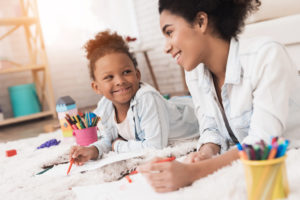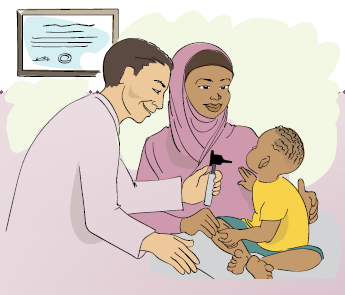Kindergarten Preparedness: The Importance of Relationships and Child Engagement

Every parent or family member wants their child to be the next Einstein (of course, without the wild hair and mustache). Or perhaps their daughter could be the next Sonia Sotomayor (sans the fashion backward black Supreme Court justice robe). But before planning each child’s path toward a MacArthur Genius Award, teachers, providers, parents and families all want to know how best to prepare young children for kindergarten.
How to prepare children for kindergarten?
Cost and location are the most important factors influencing a family’s decision on which early care and education setting their child will attend. Yet numerous national research studies continue to conclude that for children to be prepared for kindergarten, the early childhood experiences they have in programs or at home must be of high quality. Simply attending a program without regard for quality or watching television and playing videos at home does not ensure that children will be ready for kindergarten.
What is the Quality Rating and Improvement System?
And so, states across the nation have launched initiatives to improve prekindergarten: program quality and give families valuable tools for assessing programs so that quality factors inform the early care and education decisions they make for their children.

These state initiatives, generically known as Quality Rating and Improvement System or QRIS, focus primarily on the learning environment and teacher/provider/caregiver qualifications. Quality elements to look for in a classroom or family child care include:
- Healthy and safe facilities (e.g., licensed by the state).
- Age-appropriate tables and chairs.
- Adequate “open-ended” toys and materials (e.g., blocks, playdough, paints, brushes and markers).
- Ample opportunities for dramatic (i.e., pretend) play (e.g., “house area,” puppets and puppet theater).
- Cognitive play areas (e.g., writing area, science table, water table, sandbox and book corner).
While educational background, certificates, licenses and permits are key components of teacher/provider/caregiver qualifications, experience, including proven early care and education competency, are often just as important, if not more valuable in the attainment of a skill set that translates to “highly qualified.”
Why are the relationships and interactions important?
And while the environment and teacher/provider/caregiver qualifications are essential to quality early care and education, more and more high-quality learning opportunities depend on two key elements: the relationships and interactions that children have with their teachers, providers, families, caregivers and peers; and the level of children’s engagement in play and learning. Teacher, provider, caregiver and family relationships that are highly interactive and characterized by extended conversations including open-ended questioning; imaginative play activities that require some degree of problem-solving; shared book reading including a creative reenactment of stories, and opportunities for children to demonstrate confidence and independence, all promote healthy social and emotional development and positive attitudes and approaches toward learning. Such healthy relationships prepare children to be kindergarten-ready as well as lifelong learners.
We all learn more, engage for more extended periods and sustain our focus when we do things that interest us. Children are no different when it comes to early care and education learning experiences. And while the relationships and interactions with adults described above are vital, sometimes teachers, providers, caregivers and families should consider:
- Focusing on children’s interests.
- Providing the materials that interest them (frequently, these materials cost nothing – e.g., a refrigerator box, dirt, water and a library book).
- Ensure that children have ample time to engage with the materials and peers that interest them.
- Step back and allow children to create, imagine, explore and problem-solve independently or with peers.
Yes, maybe your child will be the next Van Gogh (with both ears) or Condoleezza Rice (of course you can be Secretary of State AND play the piano), but the best way to prepare children for kindergarten is by developing strong, lasting, positive relationships and by promoting genuine, prolonged engagement in the play, activities and interactions that interest them most.
For more information, Maryland’s quality rating and improvement system for child care and early education programs, visit the Maryland EXCELS website.




